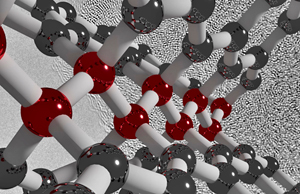Washington, Jun 10: Scientists have developed a new form of ultra strong, lightweight carbon that is elastic and electrically conductive, and may serve a wide variety of applications from aerospace engineering to military armour.
Researchers, including those from Carnegie Institution for Science in the US, pressurised and heated a structurally disordered form of carbon called glassy carbon.
They brought the glassy carbon starting material to about 250,000 times normal atmospheric pressure and heated to over 980 degrees Celsius to create the new strong and elastic carbon.
The newly created carbon is comprised of both graphite- like and diamond-like bonding motifs, which gives rise to the unique combination of properties, researchers said.
Under the high-pressure synthesis conditions, disordered layers within the glassy carbon buckle, merge and connect in various ways, they said.
This process creates an overall structure that lacks a long-range spatial order, but has a short-range spatial organisation on the nanometre scale.
"Light materials with high strength and robust elasticity like this are very desirable for applications where weight savings are of the utmost importance, even more than material cost," said Zhisheng Zhao, professor at Yanshan University in China.
"What is more, we believe that this synthesis method could be honed to create other extraordinary forms of carbon and entirely different classes of materials," Zhao added.
The study was published in the journal Science Advances.





Comments
Add new comment